Contents
By Michael Fincham
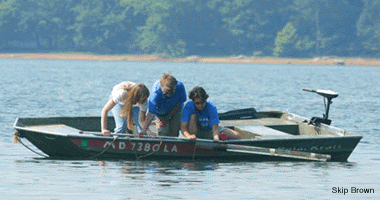
Year by year, century by century, earth and leaves and seeds have been settling layer by layer into the sediments along the Bay's bottom. Paleoecologist Grace Brush has been hauling up those sediments and using them to unlock the long-term memory of the Chesapeake.
Light gray clouds are moving low above the Chicamacomico River, diffusing the daylight, darkening the sluggish water, desaturating all the greens in the marshes and woods fringing the river. As she carries long plastic pipes to a small boat, Grace Brush keeps glancing at that shifting sky. Clouds like this could be carrying rain.
She's a 71-year-old paleoecologist who's come a long way to get here to this lonely boat landing in the soggy marshlands of the middle Eastern Shore of Maryland, and she's hoping to get in a good day's work on the water without getting drenched.
Brush left Johns Hopkins University around 7 a.m. in a large blue van loaded with her odd gear and a crew of three young scientists. They rattled through Baltimore's morning rush hour, crossed the Chesapeake Bay Bridge with its wide view of the upper mainstem, then cruised east across Kent Island on a six-lane highway flanked by shopping malls and discount outlets. Turning south they followed four-lane Route 50, running past flat farms and huge billboards for Ocean City. At Easton, and again at Cambridge, they cruised through a long gauntlet of fast food franchises and chain motels and gas stations.
At the Nanticoke River, they pulled off the highway into the small riverfront village of Vienna and hooked up with two state workers towing a trailered boat. In caravan now they went bumping off down two-lane country roads that seemed to run straight back in time. Driving past small farm fields, stands of forest and open swatches of flat marshland gashed by narrow, twisty creeks, they were soon deep into the old tidewater Maryland of a hundred years ago.
At Drawbridge, an isolated creek crossing, they parked next to the only building in sight, a long, garage-like shed that was home to a boat-building business - and a boat ramp. The state workers backed their skiff down into the river, and Brush and her crew began laying five pipes neatly along the bottom of the boat. They look like irrigation pipes or the sections plumbers install in the foundations of new buildings, but these are transparent tubes and Brush will be plunging them into the bottom of the Chicamacomico River. For more than 30 years, she has been using see-through pipes like these to look into the past, all the way back to when the foundations of the Chesapeake were first laid down. Out of her work has come an eventful story about historic changes in the Bay.
On this trip the paleoecologist is tackling a contemporary question: how long has Pfiesteria piscicida been living in Chesapeake Bay? Only five years ago, in September 1997, this stretch of river near Drawbridge became briefly famous when the Chicamacomico was the third river closed by the governor of Maryland because of sick fish and suspicions about Pfiesteria piscicida. This dinoflagellate, a one-celled microorganism with two tails, is thought to release toxins around fish, and medical researchers found evidence those toxins could also cause mental confusion in humans, especially short-term memory loss. Medical findings like these led to river closings, massive news coverage, and ongoing controversies about the role of chicken farms in causing Pfiesteria blooms. After months of heated debate, the state legislature passed new regulations requiring all Maryland farmers to reduce runoff into the state's rivers.
Which came first - the chicken or the microbe? Brush sought funding from the Maryland Sea Grant College for exploratory research. "We want to find out whether Pfiesteria is a recent kind of phenomenon," says Brush. "Or has it occurred sporadically over time?" Pfiesteria's multiple life stages include both a free-swimming cell that darts through the water as well as a tough, seed-like cyst that buries itself in the sediment. If Pfiesteria was blooming here before industrial chicken farming became popular, then Brush might be able to find remnants of its cysts.
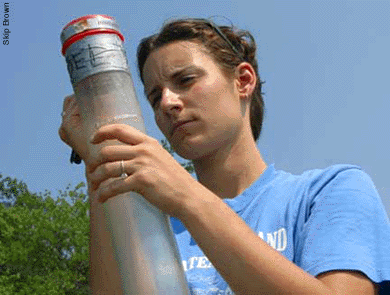
Core samples are marked with date and location, as Angie Arnold is doing here, then taken back to the laboratory, where they are opened and the painstaking process of analyzing the contents of each layer of sediment begins.
As she and her crew pull away from the dock, the clouds slide open briefly, flashing slivers of blue. At the helm of the 19-foot skiff is Cue Johnson, a state worker from the Maryland Department of Natural Resources who helps coordinate river monitoring for Pfiesteria. Lanky and laconic, he answers questions about the region as he guides the boat past open marshes broken by stands of woods. "These are primarily hunting areas," says Johnson. "A lot of wealthy people own big stretches of this." Only an occasional house can be seen behind the trees and then a farm building off beyond the marshes. It's easy to see why the low-lying landscape of eastern Dorchester County has been called "the Everglades of Maryland."
The river, in its empty reaches, seems to flow back in time through a changeless landscape - but that's an illusion. These are not the same waters and woods where Native Americans hunted. The skiff is gliding past stands of second, third and fourth-growth woods, dominated now by loblolly pine that grew up after centuries of land clearing for farming and timbering removed most of the hardwood trees that were here when the colonists came. Before the Europeans, Native Americans around the Chesapeake hunted in woods that also held hemlock, oak and hickory, trees that did well nearly 1,000 years ago during a two-century dry spell. Earlier still, trees like sweet gum and black gum dominated many of these woods during a long wet stretch reaching back nearly 6,000 years. If you look all the way back some 9,000 years ago to the long beginnings of the Chesapeake Bay, you'll find hemlock and pine flourishing and oak increasing as the last Ice Age retreated and the sea came creeping up into these rivers. And if you look back further still to a colder time 12,000 years ago when ice sheets still covered parts of Pennsylvania, you'll find plenty of spruce and fir, northern trees long gone from these lands.
Most of us, of course, can't look back that far, but Brush can. And that 12,000-year chronology of forests in the Chesapeake watershed has been constructed largely out of years of work by her and her graduate students. In 1969 when she first arrived in the region, Brush began taking narrow cylinders of mud out of rivers around Baltimore County. She drove to the sites of old water-powered mills that once jutted into rivers along the fall line of the Piedmont Plateau. After these aged mills collapsed, their ruins helped dam up decades of sediment, and when Brush, trained as a paleobotanist, went looking in those sediment traps, she found seeds and pollen in well-preserved layers. Why not try the same approach elsewhere around the Bay? "I thought this was a technique whereby we could study the history of the estuary," says Brush.
The idea was simple, even elegant. River sediments all around the Bay might hold a long-term record of changes in the Chesapeake. Year by year, century by century, rains have been falling, and earth and leaves and seeds have been washing and blowing off the land and into the rivers and mainstem of the estuary. Century by century, all that stuff has been settling, layer by layer, centimeter by centimeter, into the sediments along the bottom. Those sediments could hold hidden within them remnants of what once grew on the land and lived in the water. They could hold the long-term memory of the Chesapeake.
If the idea was simple, the work was not. Back in her lab, Brush would slice her cores lengthwise, cut out a number of one-centimeter cross sections, and then chemically wash each sample to isolate the pollen grains and seeds. She would pick patiently through her samples, one centimeter at a time, counting what she found, naming what she could, then move on to the next centimeter, slowly working her way down through time. What Brush had to create, largely through lab work and brain work, was a way of reading that record - and putting dates on it. That would take time, scanning electron microscopes, carbon-14 dating techniques, library research - and a lot of graduate students.
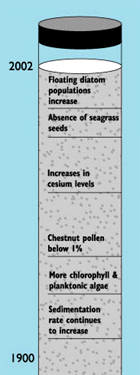
Captured in a core, pollen grains and seeds, diatoms and phytoplankton all signal changes that have taken place on land and in the water. This schematic lists some of the data that Brush has found in samples in the upper Chesapeake and the shifts they reflect (click on thumbnail to see the complete schematic).
About 20 minutes downstream from Drawbridge, Cue Johnson cuts the motor, letting the boat drift. Angie Arnold, one of Brush's current graduate students at Johns Hopkins, lifts a pipe and begins to assemble something called a piston core sampler. A slim brunette in a baseball cap, she works quickly, screwing a metal clamp around the tube and attaching a metal push rod useful for forcing the cylinder down into the river bottom. Brush threads a rope down through the tube, ties it to a plug (she calls it a piston) and then promptly jams the plug/piston back into the end of the tube, creating a seal. The piston core sampler, assembled, looks like a low-tech, home-made contraption, and it is. The plastic tube came from a building supplier and the metal clamp from a machine shop.
Today the paleoecologists from Hopkins have a couple of high-tech helpers with them in the boat. Watching and helping when they can are Holly Bowers and Torstein Tengs from the University of Maryland Biotechnology Institute. They work in the lab of David Oldach, a medical doctor and an infectious disease specialist with the Institute for Human Virology, who devised a gene probe that can find Pfiesteria in water and sediment by detecting its DNA. His test, created quickly after the 1997 Pfiesteria episodes in Maryland, is now widely used for analyzing samples collected along the East Coast. Oldach's research assistants are down on the river with Brush because they want to find out whether his probe can find Pfiesteria remnants that may have been buried decades or centuries earlier.
Tengs, a young buzzcut Norwegian, is here for another reason. Plunging a piston core into the bottom is muscle work. "Okay Torstein, now you know why we brought you along," laughs Brush. Leaning above the water, he and Holly slide the core sampler into the water, probing for the bottom. Then Torstein lifts up on his toes, hunches his shoulders and shoves down hard on the push rod, grunting, as the tube punches down through the mud. Bowers leans over the water, holding the tube steady, and next to her Arnold kneels on the gunnel pulling steadily on the rope, slowly dragging the piston plug up through the core. Inside the pipe, the plug creates a vacuum, holding the sediment in place, much like a finger over a straw. Down below the dark water, the tube sinks into the bottom, slowly filling with sediment.
|
|
What plants and animals were in the water twenty years ago - or a thousand? Poring over sediment cores, Grace Brush has unearthed vestiges of what was once abundant in the Bay and its watershed, from diatoms to dinoflagellates, along with clear evidence of the great land clearing that followed European colonization. Photo courtesy Johns Hopkins University. |

|
These sediments down along the bottom of the Chicamacomico could hold seed beds for future Pfiesteria blooms. Pfiesteria is one of several algal and dinoflagellate species that can drop out of the water column, switch into a cyst form and then wait in the sediment until the conditions are right to emerge again. Along the New England coast, a species called Alexandrium, a cause of paralytic shellfish poisoning, moved down from the northern Gulf of Maine to create seed beds along Cape Cod. In the Gulf of Mexico, Gymnodinium breve, a cause of neurotoxic shellfish poisoning, forms seed beds along the shores of Texas and Louisiana.
On September 13,1997, this stretch of the Chicamacomico was the scene of some kind of toxic bloom followed by other kinds of disturbing results. On a warm, windless morning, seven state workers arrived in Drawbridge to find a heavy mist rising off the river and hundreds of thousands of fish swimming erratically, most of them menhaden. When three of the workers went out in a boat to take fish trawls, they found red lesions on every fish they hauled out. Whether Pfiesteria could be causing these lesions is a question still hotly debated, with some fish pathologists naming other bacterial and fungal species as the likely culprits behind lesions like these. Nevertheless, all the water samples taken that day would show Pfiesteria-like organisms in large numbers.
What happened next was later documented in the Journal of Toxicology and Environmental Health. Most of the workers at the river that morning were quickly struck with flu-like symptoms - including four workers who never went out on the water. While standing on the bridge, they apparently inhaled toxins that were rising off the river during a bloom event. The immediate symptoms included burning eyes for four of the workers and headaches or sore throats for six. Within the next three days, four workers also reported unusual exhaustion and mental confusion. Six of the seven suffered crampy abdominal pain, nausea or diarrhea. Could this kind of bloom event leave a seed bed behind?
The three young scientists slowly haul up Brush's core sampler, then heave the dripping pipe up out of the river and aboard the skiff. In the lower half of the tube they can see about two feet of unbroken sediment. The sediment sticking out of the bottom looks like a dark goulash flecked with rust-colored bits of grass.
Arnold kneels quickly and with her hand seals the tube until her boss can pop a red plastic cap on the bottom. Then more muscle work as the young Norwegian yanks and yanks on the rope running down through the tube, working the piston plug up the pipe, pulling up against the vacuum. When it finally pops, he gets a quick whiff of that marsh-rot stink familiar to field workers who go mucking through wetlands. Arnold quickly caps the top and Bowers wraps both ends with duct tape. While Grace snaps photographs of the site, Arnold labels the tape.
When Brush first began picking through her early cores, she found seeds and pollen in great numbers, often hundreds in a single centimeter of mud. They had been blown into the river by wind or washed in by rain. Instead of taking root as trees or plants, these seeds settled into the sediments, leaving a layered record of the trees and vegetation that once had covered the land. But how ancient were these seeds? The great puzzle was how to put dates on all the layers in her cores.
Ragweed pollen provided one of her breakthroughs. When Brush worked her way through her core samples, she would find - at certain levels - sudden jumps in ragweed counts. Anyone with the right kind of allergies knows that ragweed pollen in the air can lead to swollen sinuses, itchy eyes and sneezing fits. The weed itself is an opportunistic plant that grows fast in broken ground, whether it be plowed farm fields or urban construction sites. Although there's a lot of ragweed around in modern life, there was probably little around to bother Native American hunter-gatherers. When she found those sudden jumps in ragweed counts in her cores, Brush was looking at a signal left by the first large-scale clearing of the land. European settlers had arrived and with their axes and hoes had left their signature on the new land and on the sediments in its waters. Those clumps of pollen gave Brush a piece of core she could point to and put a date on. She had found her first "event horizon" in the mud.
There would be other key horizons: the first use of plowing, the first use of chemical fertilizers, massive deforestation for large-scale grain farming, reforestation on abandoned farmland, the disappearance of chestnut trees, even the testing of nuclear weapons (the cesium horizon). All these eras left their marks in the mud, marks that could be dated. The simpler techniques included counting pollen; the more complicated included measuring the decay rates of radioactive isotopes. Once she could time-date several horizons, Brush could begin calculating sedimentation rates for different eras of history in different parts of the Bay.
Core by core, paper by paper, Brush slowly built a reputation as a pioneer in Chesapeake Bay science. Geologists had already been using sediment cores for decades to study the ocean and search for oil. And scientists had already begun using pollen patterns in sediments of lakes to reveal the history of land-use changes in the upper Midwest and elsewhere. What Brush did was pioneer that approach in the Chesapeake, persisting in the face of early doubts about its usefulness here. An estuary, after all, is not a lake. Since river waters are mixing with ocean waters in an estuary, sediments could be washing out to sea. If not, they could be unreadable as a result of mixing by tidal flux and resuspension and general bioturbation. "No one thought that the estuary could be used for this type of work," says Brush.
But with the findings from her cores, she was able to publish groundbreaking research showing that ragweed pollen left a clear signal in estuaries as well as lakes. According to the late Don Pritchard, a pioneer in Bay oceanography, her early results surprised her colleagues by showing "how much we can learn by looking at the bottom." Her ragweed signal, he said, would help establish dates for historic changes in the watershed - both on the land and in the Bay. "That is just a great marker. It is just wonderful to use that," explains Thomas M. Cronin, leader of new sediment coring project by the United States Geological Service. "She was the first to do this type of work in the Chesapeake Bay."
|
|
The DNA of Pfiesteria shows up on a gene probe developed at the Institute of Human Virology. Holly Bowers checks the photo of a DNA gel for evidence of Pfiesteria in the Chicamacomico River. |
And she found a lot more than seeds and pollen in her cores: there were microfossils of diatoms and dinoflagellates, copepods and cladocera - good evidence for the phytoplankton and zooplankton food webs once found in these waters. Also in the mix were fossil pieces of the Bay's early bottom dwellers, from worms to clams and oysters and underwater grasses. Over three decades and 300 cores, Brush has been writing a first draft of the history of environmental change in the Chesapeake.
For centuries, the greatest force for change was climate. In the sediments Brush found shifts in animal and plant populations that corresponded with climate swings like the Warm Medieval Period which lasted from 900 to 1200 A.D. and the Little Ice Age which followed it. Beginning with European settlement, human life on the land began, slowly at first, to force changes in the water. "The core records show that early agricultural activity had very little effect on the sediment," says Brush "The first farming was simply clearing some forest, girdling trees and planting tobacco in hills as the Indians had planted corn. It was later when people were shifting to grain farming and crop rotation that soil erosion in the estuary began to really increase." As more farmers cut down trees and plowed up the soil, sedimentation rates would double, then double again. In the upper fresh-water reaches of the tributaries, the rates could run ten times higher than in pre-Colonial years.
And that changed everything. With increased sedimentation, dozens of shipping ports began to silt up. Bay waters became darker, letting less light through to bottom grasses. With the decrease in forest cover came a decrease in diversity of phytoplankton, the floating plants that form the base of the Bay's food webs. With heavy use of fertilizers, underwater grasses actually increased at first, especially in the upper reaches of the Bay, only to decline and nearly disappear during the 1970s.
In her cores, especially in the diatom records, Brush and former graduate student Sherri Cooper found clear evidence of the most powerful change of all: the shift from a system dominated by bottom-dwelling plants and animals to one dominated by floating plankton. Phytoplankton declined in species diversity but increased dramatically in total numbers, and that increase altered the dynamics of the system. Fed by fertilizers and animal waste and sewage, the annual blooms of phytoplankton were blocking much of the sunlight needed by bottom grasses, a key habitat for small fish and crabs. With blooms now exceeding the grazing rates of zooplankton, large die-offs of phytoplankton were sucking oxygen out of the water column, leaving in the sediments a record of anoxia that Brush and Cooper were able to document in their cores. Oysters, clams, worms, underwater grasses, even migratory fish could no longer flourish in these dark dead zones that were spreading now along the bottom of the Bay. Bottom populations kept declining, and floating populations kept increasing, especially algae and dinoflagellates.
The clouds sloshing across the skies finally unleash their rain on the Chicamacomico. A light shower drifts along the river first, sprinkling Brush and her crew as they try and fail to punch a fifth core sample down into a hard patch of bottom. In brackish waters like these, Brush tries to bring home five or six tubes to make sure she gets one coherent core sample. At the boat ramp, the rain lets up while the scientists unload their long tubes, then a drenching rain hammers down as they head home in their blue van along slickening roads, wipers flicking.
The lab findings from these rainy-day cores are puzzling. Back at Johns Hopkins, Arnold and Bowers go to work, looking for DNA and dates for Pfiesteria. They slice each core lengthwise, crack it open to examine the stratigraphy, then work down the split core, cutting matching one-centimeter slices. After Bowers drives her samples across town to David Oldach's laboratory at the Institute for Human Virology, she is able to detect Pfiesteria DNA in only one core out of four from the Chicamacomico.
With that news, Arnold and Brush go back to their samples from that same core, trying to figure out the dates for those first appearances of Pfiesteria. After eyeballing and counting grains and seeds, Arnold is able to date one pollen horizon around 1700 and another around 1880. The Pfiesteria DNA, however, is almost right at the top of the core. That's puzzling because many scientists believe a creature as complicated as Pfiesteria, with multiple life stages and complex feeding strategies, must have an ancient evolutionary history. The Pfiesteria "horizon" in these first Chicamacomico cores, however, is so recent it looks like Pfiesteria just showed up yesterday.
There are similar results from other waters. Brush and her collaborators find the DNA of recent Pfiesteria in one core from the Pocomoke, one core from Indian River Bay in Delaware and one core from the middle of the Chesapeake Bay. This last core, donated by Thomas Cronin's group at USGS, holds over 20 feet of sediment, reaching back 18,000 years into the age of the last glaciers. With this, their longest core, they test 14 separate slices, taken every 10 centimeters, back down to 1860 and slightly beyond. But Pfiesteria shows up only twice: at the 1980 level, and then once again at the 1940 level.
From these first cores, it is clear Pfiesteria was around before the recent explosion in industrial chicken farming - but possibly not in great abundance. Brush doesn't want to read too much into these early findings. "When it doesn't show up, it doesn't mean that Pfiesteria wasn't there," she says. On their longest core they tested only 14 slices out of the last 150 years, roughly a 1-in-10 sampling. If they could afford to test every centimeter, an expensive proposition, Pfiesteria DNA might show up in more of those untested, in-between slices. So far, however, it is proving somewhat easier to find Pfiesteria in recent rather than in ancient sediments.
And those recent sediments may hold other troublesome species. Since the Pfiesteria episodes of 1997, a number of other, sometimes-toxic species have been discovered in the Bay for the first time. The Bay is now home to microorganisms like Chattonella, a red-tide algae that caused fish kills in Japan and Norway; Microcystis, a cyanobacteria that forms a blue-green algae scum that makes animals sick; and Dinophysys, a dinoflagellate that caused oyster bed closures in the Potomac in 2002. Oldach's lab is already developing a gene probe that will test for the DNA of Chattonella, a test that could be later be applied to Brush's archive of Pfiesteria cores.
Brush and her young collaborators may end up documenting yet another subtle shift in the changing ecology of the Chesapeake. As they work these new cores, their goal is to analyze how changes in land use affect water quality and alter dinoflagellate communities (including Pfiesteria). Her earlier cores helped verify the historic shift from a Bay system once dominated by bottom dwellers to one now dominated by floating plants and fertilized by heavy nutrient inflows. Her recent cores could show whether all those floating species and nutrients are supplying food and energy for toxic blooms, allowing species once scarce to flourish in the contemporary Bay. Then Brush, the persistent pioneer, will have written yet another new chapter in her history of environmental change in the Chesapeake.
For More Information
Chesapeake Bay
The Chesapeake: An Environmental Biography. 2001. John R. Wennersten. Maryland Historical Society: Baltimore.
"The Chesapeake Bay Estuarine System." 1995. Grace Brush. Pages 397-416 in: N. Roberts, ed., The Changing Global Environment. Blackwell: Oxford, UK.
The Chesapeake Bay: Geologic Product of Rising Sea Level. https://pubs.usgs.gov/factsheet/fs102-98/
Discovering the Chesapeake: The History of an Ecosystem. 2001. Philip D. Curtin, Grace S. Brush, and George W. Fisher, eds. Baltimore: The Johns Hopkins University Press.
Effect of Climate Variability and Human Activities on Chesapeake Bay. https://pubs.usgs.gov/factsheet/fs116-00/
The Pfiesteria Files. A Maryland Sea Grant documentary that examines the "Pfiesteria hysteria" that gripped much of the mid-Atlantic in 1997. Available in VHS video format. /goto.php?area_id=2123
Pfiesteria and Harmful Algal blooms, Mid-Atlantic Sea Grant programs web site. https://www.pfiesteria.seagrant.org/
Calvert Marine Museum, paleontology of the Chesapeake. https://www.calvertmarinemuseum.com/paleontology.htm
Women in Science
From Scarcity to Visibility: Gender Differences in the Careers of Doctoral Scientists and Engineers. 2001. The National Academy of Sciences: Washington, DC. https://www.nap.edu/books/0309055806/html
The Door in the Dream: Conversations with Eminent Women in Science.1999. Elga Wasserman. A Joseph Henry Press book for the National Academy Press: Washington, DC.
Women Changing Science: Voices from a Field in Transition. 1995. Mary Morse. Perseus Publishing: Cambridge, MA.
|
|
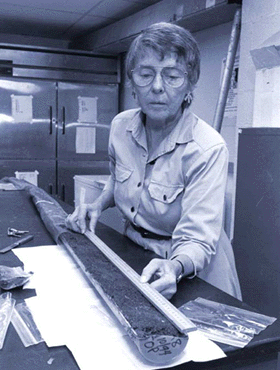
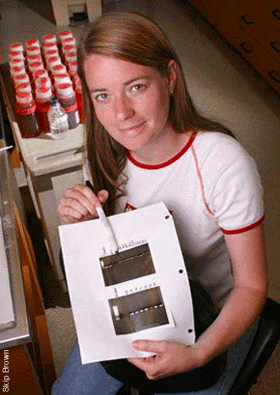

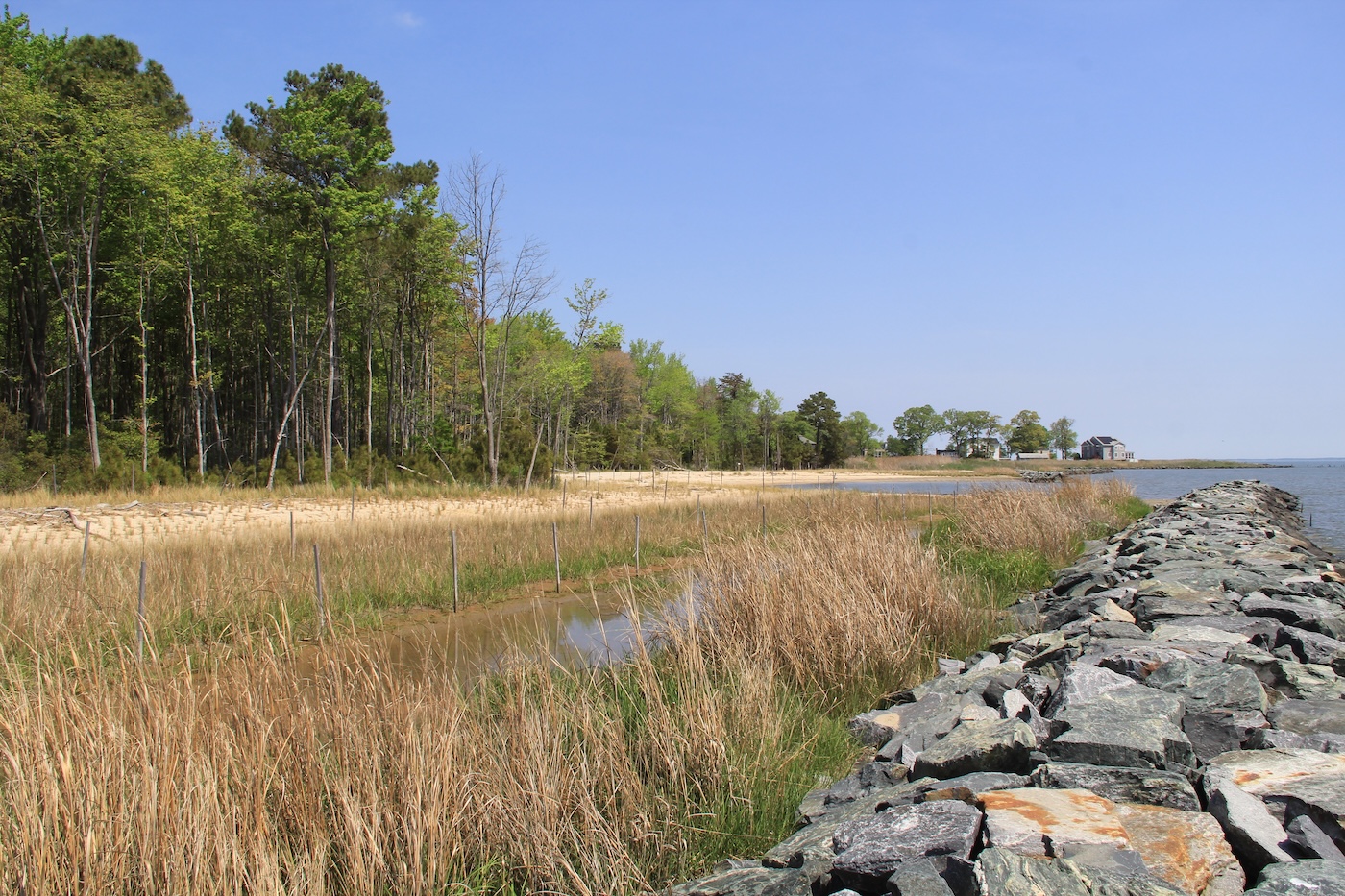
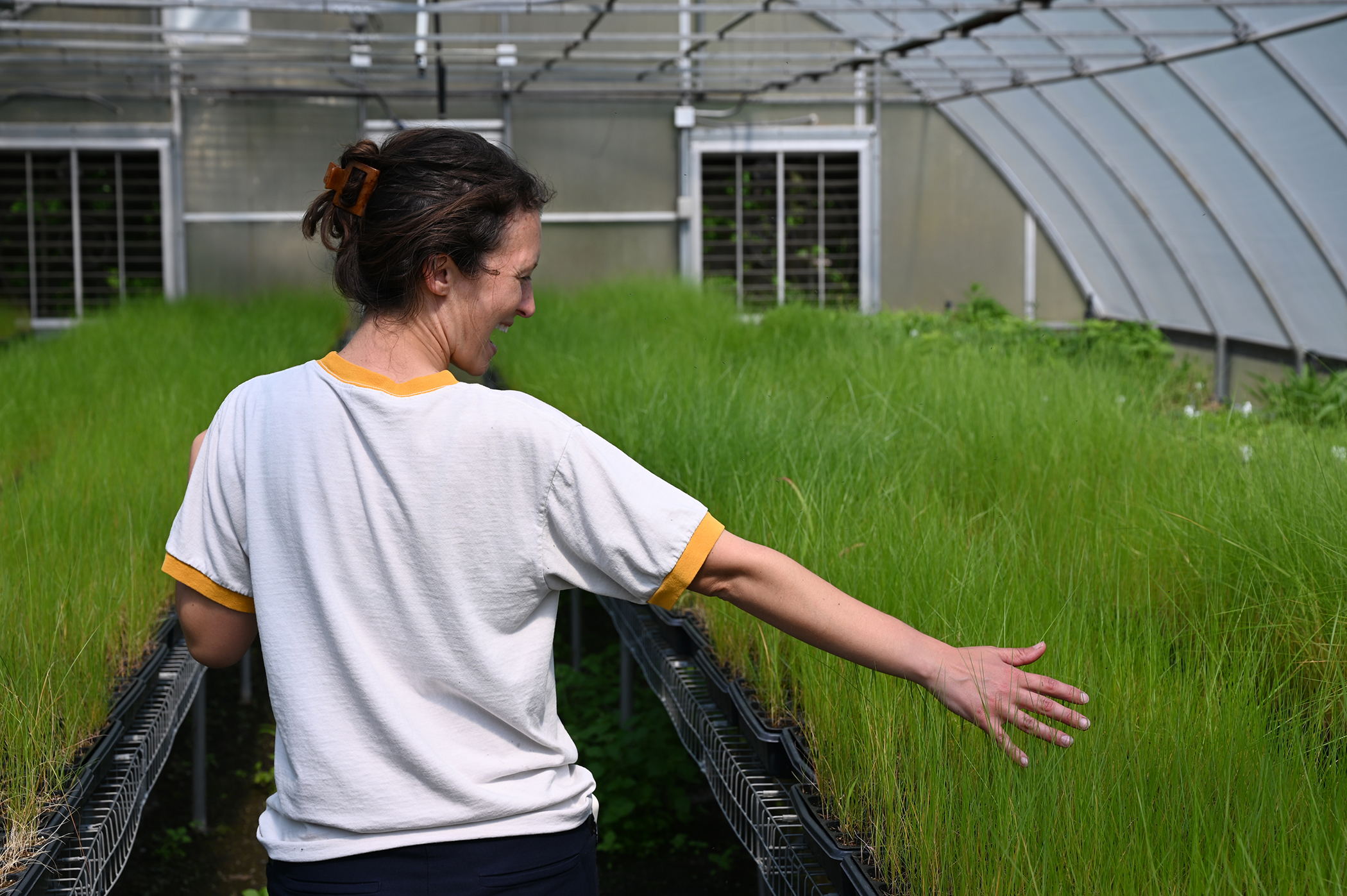
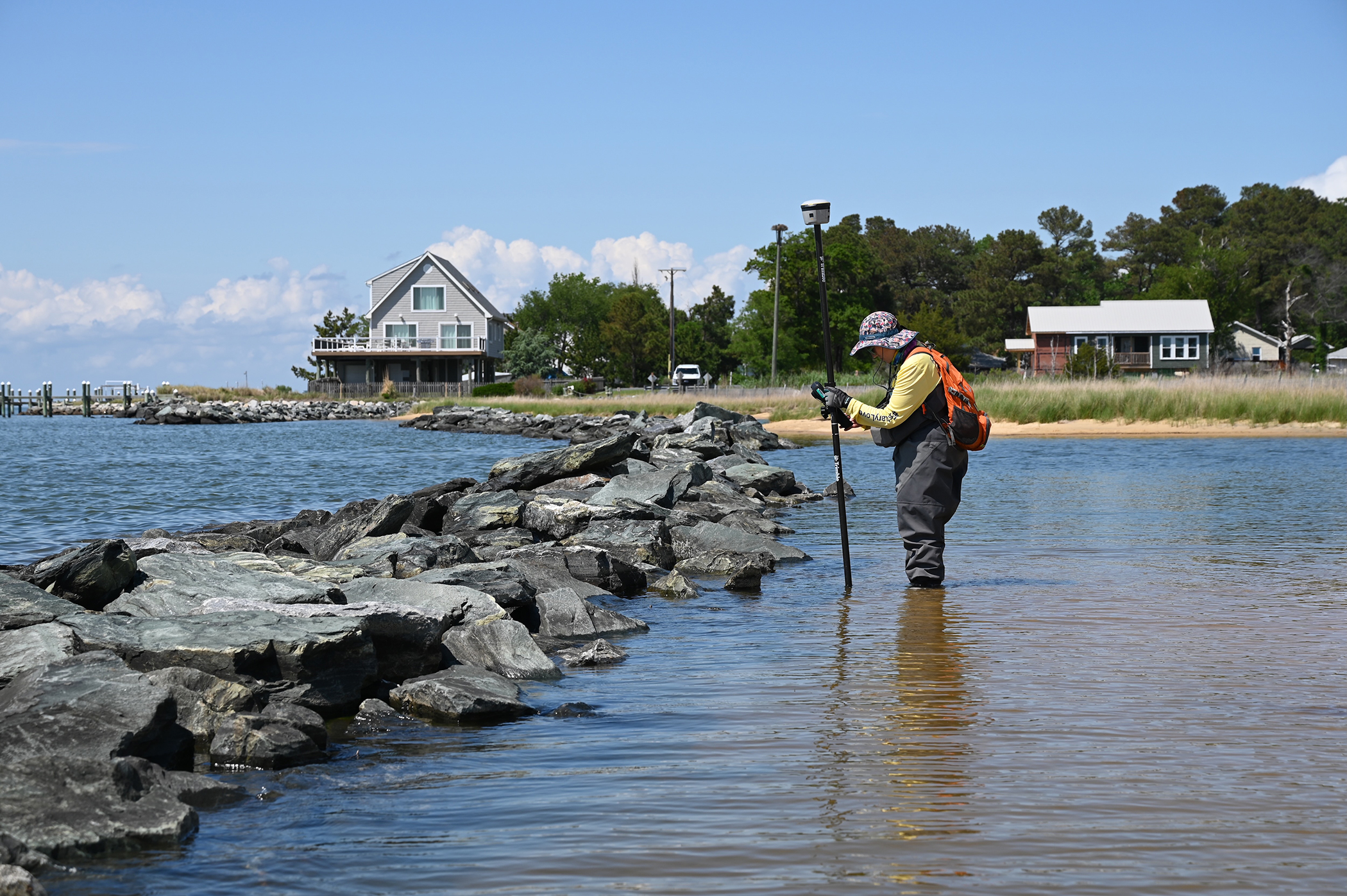
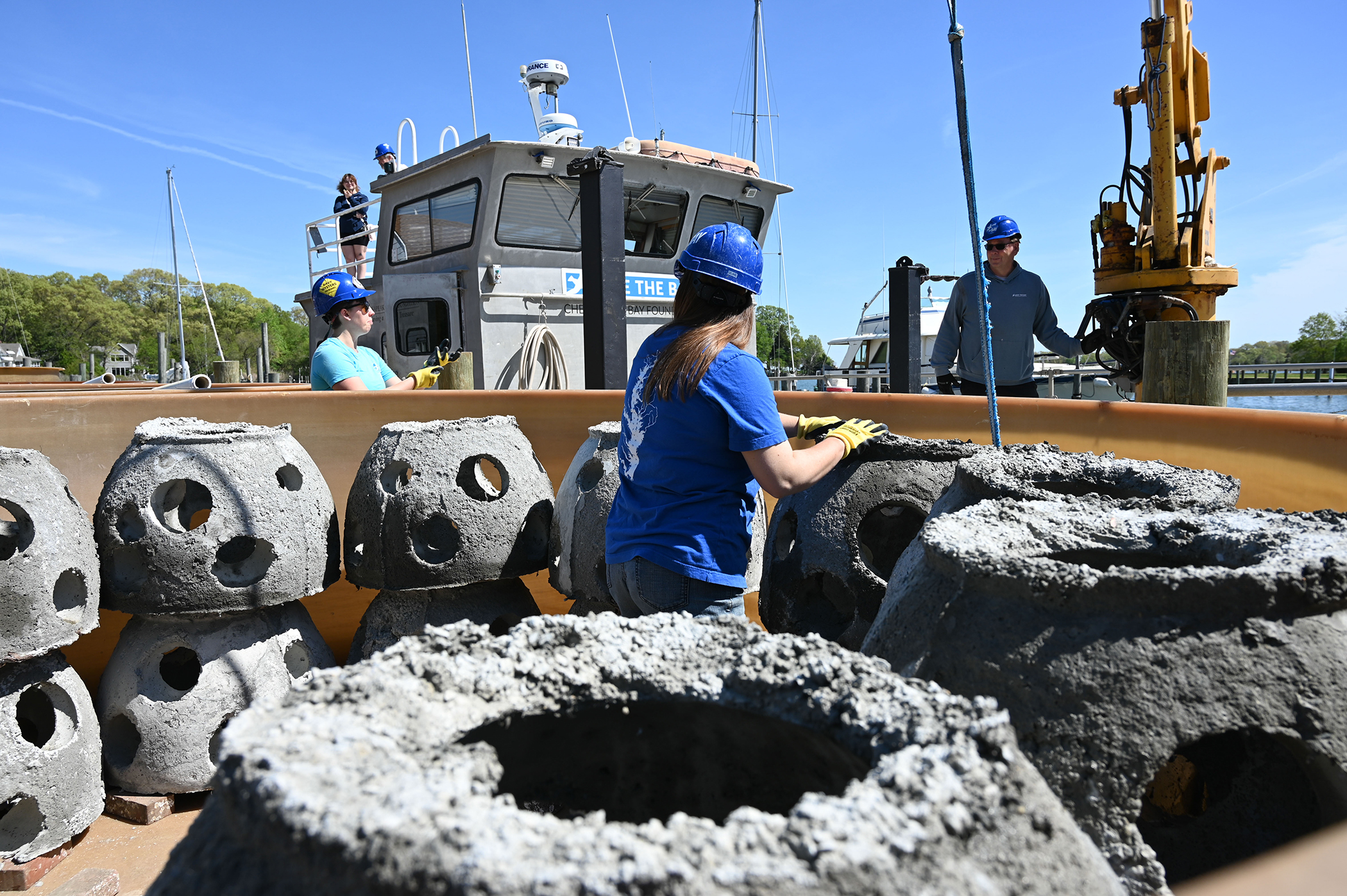
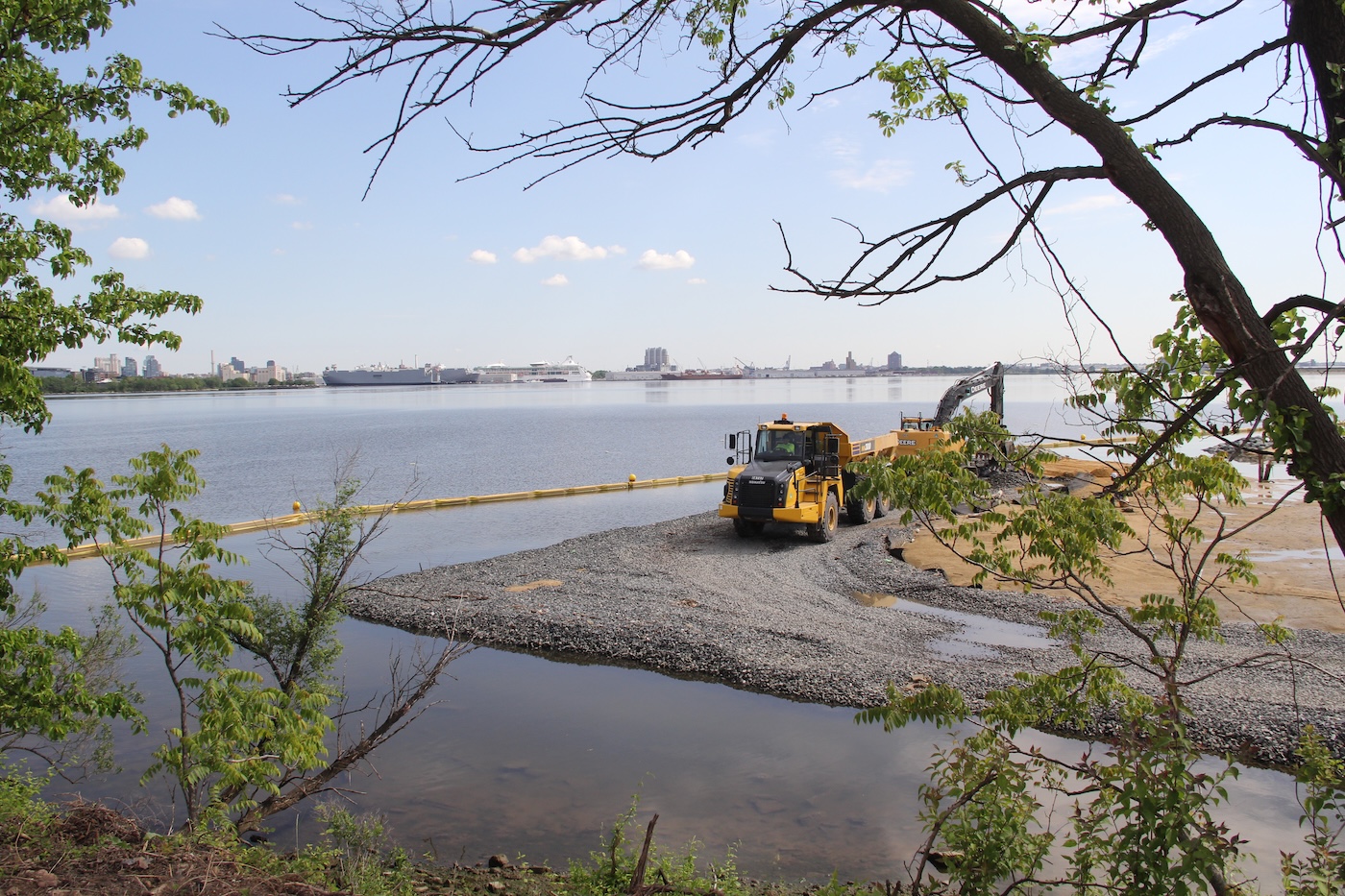
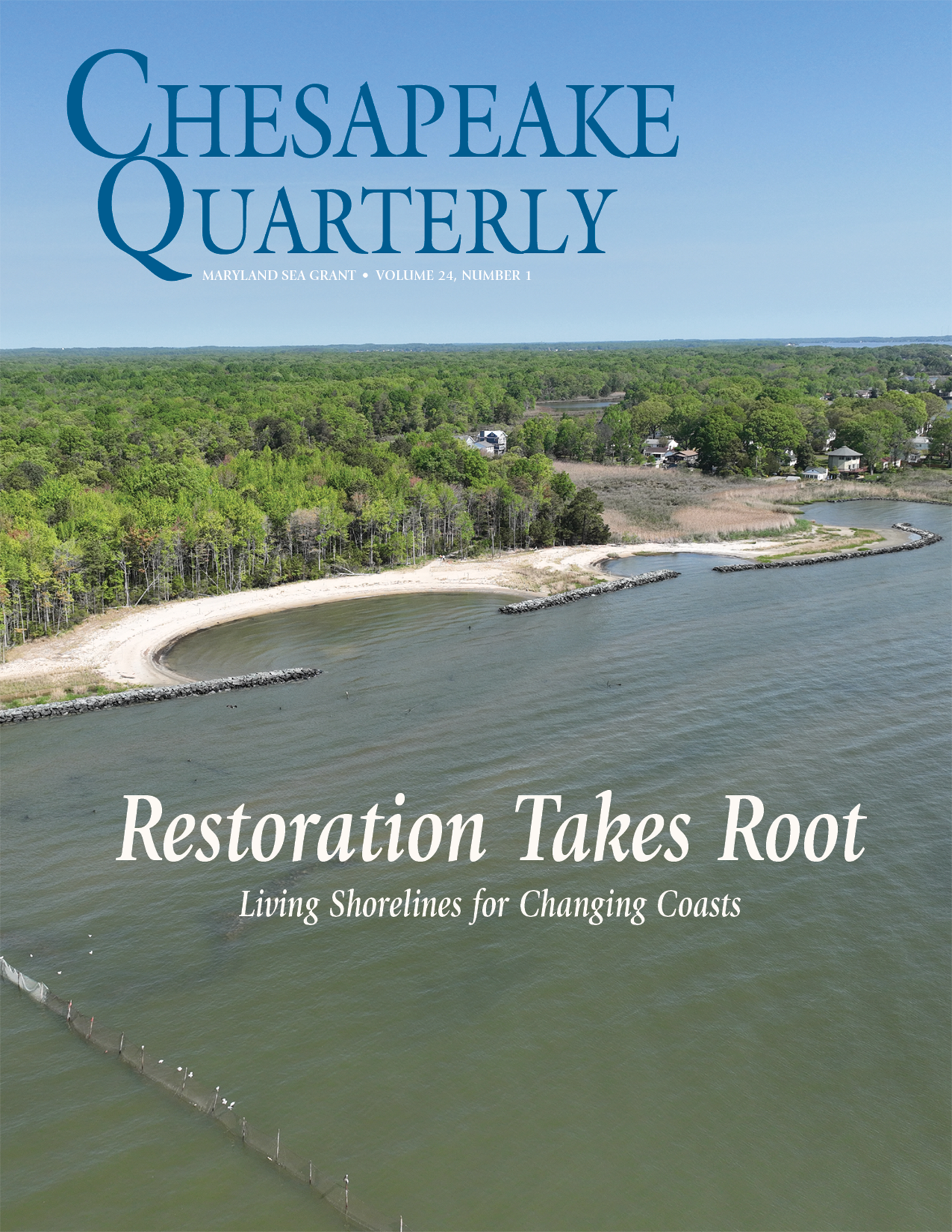
![[Maryland Sea Grant]](/images/uploads/siteimages/CQ/MD-Logo.png)